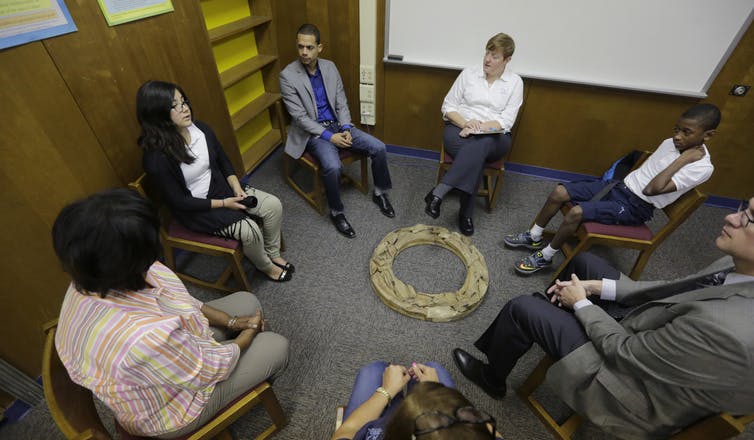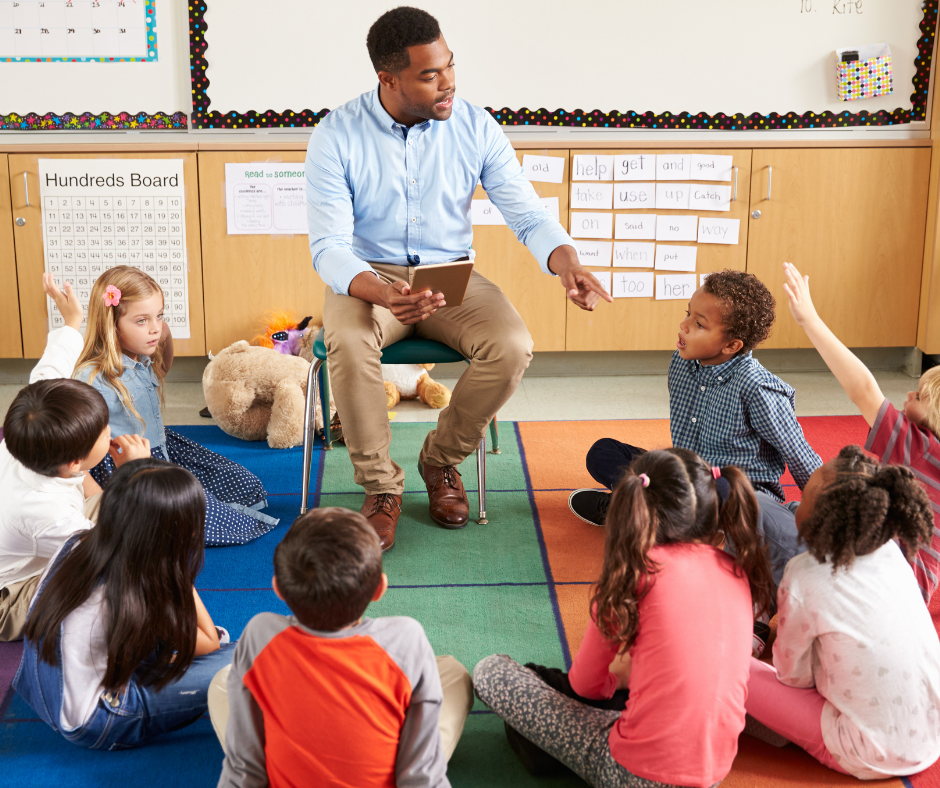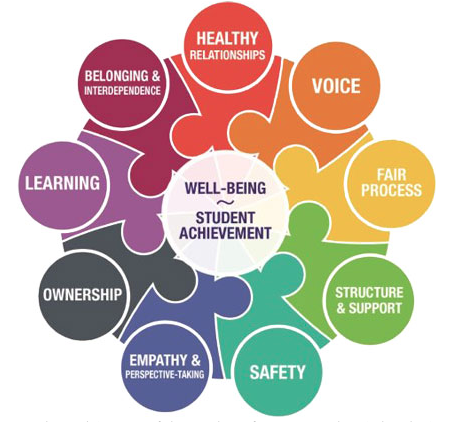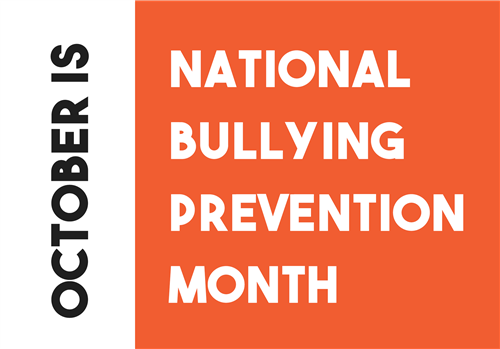CM Restorative Practices Trainer Paul Osincup provides an overview on Restorative Practices (RP). Paul discusses how he came to adopt RP as a viable alternative to traditional disciplinary methods, beginning with his years of working with youth as a college administrator.
Author: Geo Howard
Increasing Student Voice: Strategies to Reduce Bullying & Improve School Climate
CM Founder Rick Phillips and LeeAnn Lichnovsky discuss how empowering students to find their voice improves school climate.
Sexual Misconduct In Our Schools And How Students Hold The Key
by Rick Phillips, Founder, Community Matters
Sexual abuse and molestation present a significant and growing concern in our schools and communities. Unfortunately, inappropriate touching, sexting, porn, grooming, date rape, and other forms of sexual abuse are becoming more incessant. Educators, law enforcement and legislators are struggling to find solutions to this disturbing trend.
While some instances of sexual assault clearly go unreported, the AP found 17,000 official reports of sexual assaults at schools between 2011-15. Some of the assaults that happen at schools are caused by teachers or staff, while roughly 20% of educators also suffer sexual harassment or assaults.
Often, the reaction to these troubling issues has led to harsher laws and policies, along with increased consequences, all of which have not proven entirely effective in solving the problem. What has proven to be successful is a multi-tiered approach that includes engaging all school stakeholders – staff, families and students – and implementing prevention-based education initiatives with clear policies and practices that are restorative.
All school staff can benefit from further education about sexual harassment so they are better prepared to identify and address it. Clear understanding of the difference between bullying and sexual harassment and assault can better equip educators to deal appropriately with the issue, explain the difference to students, and support students in coming forward with their experiences.
Additionally, families need to be educated and supported in understanding the issues more clearly, to learn the most effective ways to communicate with their children and the steps to take when their children tell them about any concerns they have.
A third and critical stakeholder that is often overlooked are the students. Engaging and empowering students is very effective because they are often in the best position to prevent, stop and report incidents of sexual inappropriateness. Students see, hear and know things adults don’t and they can intervene in ways that adults can’t. They are generally aware of any incidents before adults are informed. These factors put students on the “front lines”, where they have tremendous power in setting social norms of kindness, connectivity, and the courage to speak up, all of which contribute greatly to having a safer school with a positive climate.
Here are some specific actions students can take to prevent and address sexual misconduct:
1. Notice and identify what is happening and think about the harmful effects it may cause. When students have increased awareness of the covert and overt ways sexual misconduct occurs, they are more able to identify it and willing to take action.
2. Recognize and determine the type of misconduct, the severity, who is involved, and the environment in which the incident is happening. Assessing and discerning the situation helps to determine the appropriate action to take and whether it should be reported.
3. Reach out and befriend a fellow student who may be targeted. These students are most vulnerable and likely to be subjected to manipulation and mistreatment. By creating connections, students show their support and model positive behavior to their peers that demonstrates a culture of looking out for one another.
4. Be an upstander, not a bystander. By speaking up and acting, students model positive peer pressure and their actions indicate that sexual misconduct is not acceptable on campus.
5. Reach out to a trusted adult and report potentially dangerous situations. Helping a student who is at risk and might otherwise not seek help can help ensure that the student gets the support they need before the situation worsens.
Young people are in a unique and vital position to make a positive impact in preventing and stopping sexual misconduct. We believe that students at all levels hold the key! They are ready to serve as change agents and upstanders in their schools and communities. When they become concerned, they want to do the right thing. What the evidence tells us, is when we engage, equip and empower young people, they can and will play a critical role in looking out for each other, resulting in safer schools and communities.
When we utilize a multi-tiered systemic approach, one that engages and empowers the whole school community, we significantly increase the likelihood of reducing and stopping incidents of sexual misconduct in schools and we keep our children and young people safe.
The Power of Youth to Reduce Alcohol and Drug Abuse in Schools
by Sami Ryan
“We all act like it’s just fun, that everyone’s having a good time. But being here today and hearing everyone’s story, you realize that everyone is also struggling with it, either with family and addiction, or friends going too far. There’s more to it, for all of us.”
–High school student, Northern California
I overheard this comment from a student at one of our Alcohol, Tobacco, and Other Drugs (ATOD) Prevention Trainings, and it stuck with me. When ATODs are such a pervasive and prevalent issue facing teens, especially vaping, how do we help them connect with one another and provide space for them to share their stories in a safe, meaningful way? When given permission to be vulnerable, to open up to one another, we see time and again that students are desperate for connection, beyond their Snaps or Instagram posts. They want validation that the problems they are struggling with aren’t unique to them.
The big question, the one we are constantly working on here at Community Matters, is how can we connect young people to one another, deeply and meaningfully, so that they can answer their own questions and enlist support from each other? The answer, we have found, lies in our peer-to-peer framework which postulates the following: engage, empower, and equip young people to be contributors, not just consumers, at their school. When young people feel valued, seen, and heard, they will begin working towards creating a better school.
With this fundamental principle as our foundation, the ATOD Prevention Training addresses the perpetual problem of teen alcohol and drug use, abuse, and misuse. While other alcohol and drug prevention trainings might suggest a “just say no” approach or rely on fear-based teaching, Community Matters focuses on empowering youth. The question we ask is: can we encourage young people to become upstanders, increasing their likelihood of standing up and speaking up when they witness dangerous or unhealthy choices being made by their friends?
The ATOD training design provides a safe, structured, deep dive into the unique experiences, beliefs, values, and assumptions youth have around ATODs. Once they realize how complex their own feelings are towards ATODs, and recognize that other students are grappling with this ambivalence, the conversations deepen, the connections grow, and they begin to realize how important it is to learn what to do or say when they see their friends entering dangerous situations.
The most meaningful point in the training I’ve witnessed is when participants drop into a Restorative Circle together. With guidelines such as listen from the heart, speak from the heart, say just enough, and don’t rehearse, the students begin sharing with each other, and eventually dive deeper when asked to answer “Who is harmed and how by ATODs.” As students begin sharing, the energy in the room changes. Students frequently say that they share things in that circle they haven’t ever spoken aloud to another person. There is immeasurable power in being heard, of sharing your story, of opening up to your peers and having them respond with empathy, compassion, and ultimately, understanding. An understanding that says “I see your pain, and I recognize it, because I too have experienced a loss that could have been prevented.”
At this stage of opening and increased awareness we then ask students if they are ready to learn tools and techniques on what to do or say to support their friends in making healthy and safe decisions around ATODs. It is a moment of transformation as the students become eager for ways to prevent a future story from being shared in a future circle of a tragic ending to a preventable situation. By the end of the second day of training, students have learned six “Upstander Actions,” communication skills such as Exiting, Supporting, Reasoning, Active Listening, Directing, and Getting Help, in order to develop their toolbox of being an Upstander.
As trainers and program designers, we can’t take credit for much. We can set the stage, hold space, initiate conversations, facilitate not as a sage on the stage but as a guide on the side. But at the end of the day, it’s the courage and compassion that lives in each student we are lucky enough to meet; the courage that helps us step up when it’s easier to step back, to speak up instead of stay silent.
So, the answer is yes: waking up the courage and compassion of young people does in fact increase their likelihood of standing up and speaking up when they witness dangerous or unhealthy choices being made by their friends with drugs and alcohol.
Now that we’ve found a way that is working, it is our responsibility to keep going.
For more information on Community Matters’ ATOD Prevention Prevention visit https://community-matters.org/programs-services/youth-empowerment-programs/atod-prevention/
Sami Ryan is a former Training and Program Development Coordinator for Community Matters. She worked on the design and development of Youth Empowerment Trainings, as well as training youth directly in the field. Sami supported the development of Community Matters’ ATOD program in addition to delivering this training in schools in Northern California.
Strategies for Successful Implementation of Restorative Practices: Leading the Change – hosted by Manor ISD
Monday, January 6, 2020
8:30 am – 3:30 pm
Hosted by: Manor Independent School District, Manor, TX
Cost: $135 per person
Limited to 35 participants – Register today!
This one-day training is intended for administrative-level staff with responsibility for school safety, climate, and discipline. It provides an overview of restorative practices and its relationship to discipline, school climate, and its roots in restorative justice.
Participants will learn:
- The principles and key elements of Restorative Practices
- The benefits of Restorative Practices and its positive impact on school discipline, suspensions and overall climate
- How to operationalize and implement Restorative Practices in their district and school
- Strategies for overcoming the challenges to effective implementation
To register and pay by credit card, please complete the form below.
To register and pay by check, please contact Raedene Simson at 707-823-6159 x100 or email: raedene@community-matters.org
Restorative Principles and Practices: Skills for Creating a Restorative School Culture
January 14 – 15, 2020
8:30am-3:00pm
Location: Arcohe School, Herald, CA
Cost: $265 per person
Limited to 35 participants – Register today!
This two-day experiential training will answer those questions and more. Using engaging activities, participants will understand how to integrate theory into practice. Participants will:
- Learn about the principles and key elements of Restorative Practices
- Understand the relationship between Restorative Practices and Restorative Justice
- Gain skills and tools for leading restorative circles
- Develop strategies for overcoming the challenges to effective implementation
- Recognize the benefits of Restorative Practices and their positive impacts on school discipline, suspensions and overall climate
To register and pay by credit card, please complete the form below.
To register and pay by check, please contact Raedene Simson at 707-823-6159 x100 or email: raedene@community-matters.org
Strategies for Successful Implementation of Restorative Practices: Leading the Change – hosted by RESIG
Wed. January 22, 2020
8:30 am – 3:30 pm
Hosted by: Redwood Empire Schools Insurance Group (RESIG), Windsor, CA
Cost: $135 per person (lunch provided)
Limited to 35 participants – Register today!
This one-day training is intended for administrative-level staff with responsibility for school safety, climate, and discipline. It provides an overview of restorative practices and its relationship to discipline, school climate, and its roots in restorative justice.
Participants will learn:
- The principles and key elements of Restorative Practices
- The benefits of Restorative Practices and its positive impact on school discipline, suspensions and overall climate
- How to operationalize and implement Restorative Practices in their district and school
- Strategies for overcoming the challenges to effective implementation
To register and pay by credit card, please complete the form below.
To register and pay by check, please contact Raedene Simson at 707-823-6159 x100 or email: raedene@community-matters.org
What are “Restorative Practices” in Schools? Hint: It’s Not Restorative Justice
by Paul Osincup, Restorative Practices Trainer, Community Matters
One of the first questions I ask administrators and teachers when I facilitate trainings on restorative practices is how much experience they have with it or what they know about it. After working with educators in school districts all over the country, here are three things that are consistent everywhere I go:
- Administrators and teachers are always open to learn about strategies that will help them decrease classroom disruption and increase social responsibility and inclusivity.
- When I first mention restorative practices, many people in the room think I’m only talking about restorative justice.
- Educators are predisposed to “initiative fatigue” and don’t want this to be just another thing to add to their plate.
Restorative Justice (RJ) is a formal process where a person who has caused harm to an individual or group has the opportunity to meet with those who have been harmed or affected. They create a shared agreement about how the offender can repair the harm and all parties can reintegrate and move forward. RJ is used in the criminal justice system as well as at some colleges and universities and K-12 schools in conjunction with traditional disciplinary procedures.
Restorative Practices (RP) according to Ted Wachtel, Founder of the International Institute for Restorative Practices, RP is “…a social science that studies how to build social capital and achieve social discipline through participatory learning and decision-making.”
The simplest way to understand it is that restorative practices involves a continuum of interventions and strategies that are both proactive and responsive. Restorative Justice is ultimately a subset of restorative practices and is primarily only responsive in nature. On the continuum below, RJ would be considered a form of “Formal Conference” on the right.
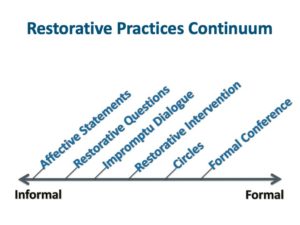
Proactive RP Strategies:
- Strengthen Relationships
- Build Trust
- Develop Community
Responsive RP Strategies:
- Manage Conflict and Misbehavior
- Meet Needs/Repair Harm
- Restore Relationships
At Community Matters, we know it’s crucial to have evidence-based strategies to respond to disruptive behavior, and we also know that prioritizing relationships and connections creates a community where students develop a sense of social discipline resulting in less disruptive incidents to respond to.
So, how does it all work?
Well, that usually takes us two full days to explain but I can at least give you some proactive and responsive examples based on the RP continuum. For example, classroom circles (second from the right on the continuum) can be used proactively or in response to an incident.
A teacher who’s trained to facilitate classroom community building circles will use circle guidelines, a talking piece, engaging prompts, and activities to help students get to know one another personally throughout the year and create meaningful connections with their classmates. Once these connections are established and the kids begin to develop trust with each other and a familiarity with using circles to speak honestly and listen actively, that same teacher may choose to use a circle to respond to an issue. For instance, she may ask the students to respond to a note she received that the class was not good for the substitute the day before.
Ideally, about 80% of the RP work that is being done in the school is to build community to foster a positive school climate, while 15 – 20% is responsive in nature.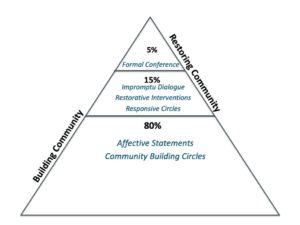
Whether I’m facilitating a workshop focused more on community building and the proactive side of things or on facilitating formal conferences to respond to student behavior, I’ve found it’s important to remind the participants that restorative practices is not a separate curriculum or initiative designed to replace your current curricular, behavioral intervention, or disciplinary models. Rather, RP is a way of being. It’s a tool to enhance your current practices, and a catalyst for youth voice. As a former Associate Dean of Students and university disciplinary officer, I understand the overwhelm and “initiative fatigue” that happens when we’re given a new program or curriculum to add to our plate. What I love about restorative practices, however, is that it’s really just a collection of tools you can incorporate into your school culture as you see fit.
Restorative practices help kids learn the basic skills it takes to be a member of a community, like empathy, listening, and conflict resolution, so it’s easier for you to teach them more complex skills like reading, writing, and math. Reclaiming the role of relationships and connection in schools isn’t just another thing to add to our plate… it is the plate.
Five Strategies to Promote Equity and Compassion in Schools: A Road Map for Reducing Physical & Emotional Violence
This workshop has been postponed, please check back for new date in 2020.
Effectively stopping hate and promoting inclusivity will not happen unless schools also have a well-defined culture and climate improvement plan – one that identifies strategies that result in a safer and more compassionate school that is built on a foundation of empathy and equity.
This one-day workshop will provide five key strategies that when implemented with fidelity have proven to increase school connectivity and safety, create greater respect for diversity, improve attendance and increase academic achievement:
- Conducting forums, class discussions and assemblies that can break down barriers and challenge stereotypes, prejudice and assumptions
- Increasing youth empowerment and youth voice opportunities
- Increasing professional development for all staff focused on skills that strengthen relationships and connections between staff and students
- Implementing effective SEL curriculum and programs
- Instituting discipline policies and practices that are corrective and restorative
National Bullying Prevention Month – The Power of Student Voice
by Jade Sizemore, Outreach & Program Coordinator, Community Matters
Bullying can take many forms, from physical aggression and intimidation to more subtle behaviors that might not be apparent to an onlooker. In honor of National Bullying Prevention Month, we would like to draw attention to all types of bullying, especially those that are less obvious yet pervasive. Seemingly subtle put-downs, teasing, and acts of exclusion, are all forms of mistreatment that can lead a child to feel insecure and unsafe.
With teachers and administrators already facing unmanageable workloads, we must begin to view students as capable contributors to a culture of change. Student bystanders see, hear, and know things adults don’t, can intervene in ways adults can’t, and are often on the scene of an incident before an adult. They are the first “boots on the ground”, and are a critical resource for positively impacting the crisis of bullying in our schools.
Given our experience with providing support, training and consultation to more than 2,000 schools, we know the “inside-out” approach is key to successfully shifting this social paradigm. This relationship-based approach is built on a foundation of restorative practices and utilizes students as resources for minimizing and preventing acts of bullying and violence. It emphasizes the power of student voice and the importance of youth and adult relationships.
Let’s do more than instruct our youth. Let’s empower them.
Using a peer-to-peer approach that empowers student voice is the quickest, most effective, and most cost-efficient way to change social norms on campus. By training the socially influential leaders of each clique on campus to be examples of courage and compassion, the social acceptability of bullying can be eradicated. This is the model employed by our Safe School Ambassadors® Program (SSA).
Evidenced-based research has proven that implementing SSA is a long-term, sustainable solution. For any school climate improvement program to be impactful, daily attention must be given to even the most subtle discrimination, intimidation, exclusion, and microaggressions. Here are some things to start paying attention to today:
• Ingenuine or passive-aggressive compliments
• Students being called by new nicknames- possibly an insult or type of taunting
• Gossip- both on and off-campus, including stories related to social media
• Exclusion or withdrawal
• Unexplained absences or complaints of feeling unwell
Bullying is not an inevitable act of youth. It is a conditioned behavior that can continue into adulthood. But there is a solution. Intervention must be swift, and discipline needs to be focused on restoration rather than punishment. Community Matters offers programs and services that help to create educational environments where learning potential is maximized, discipline incidents are reduced, and children can become caring, responsible citizens.
This work we do is vital, and we look forward to continuing collaborative partnerships with those who also believe that compassion and empathy are the key to our future. We extend our appreciation to all the organizations around the country that help to shine a spotlight on this urgent epidemic. And finally, we are ever-grateful for the thousands of students who day-in and day-out express their courage and speak up when they encounter meanness, intolerance and injustice. Together we are making a difference.


